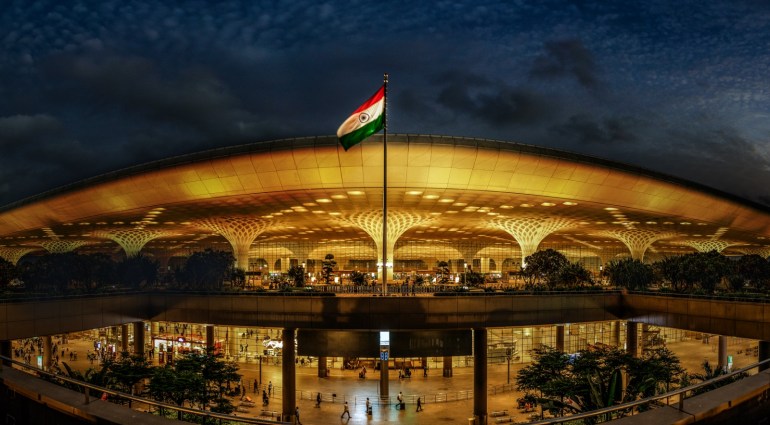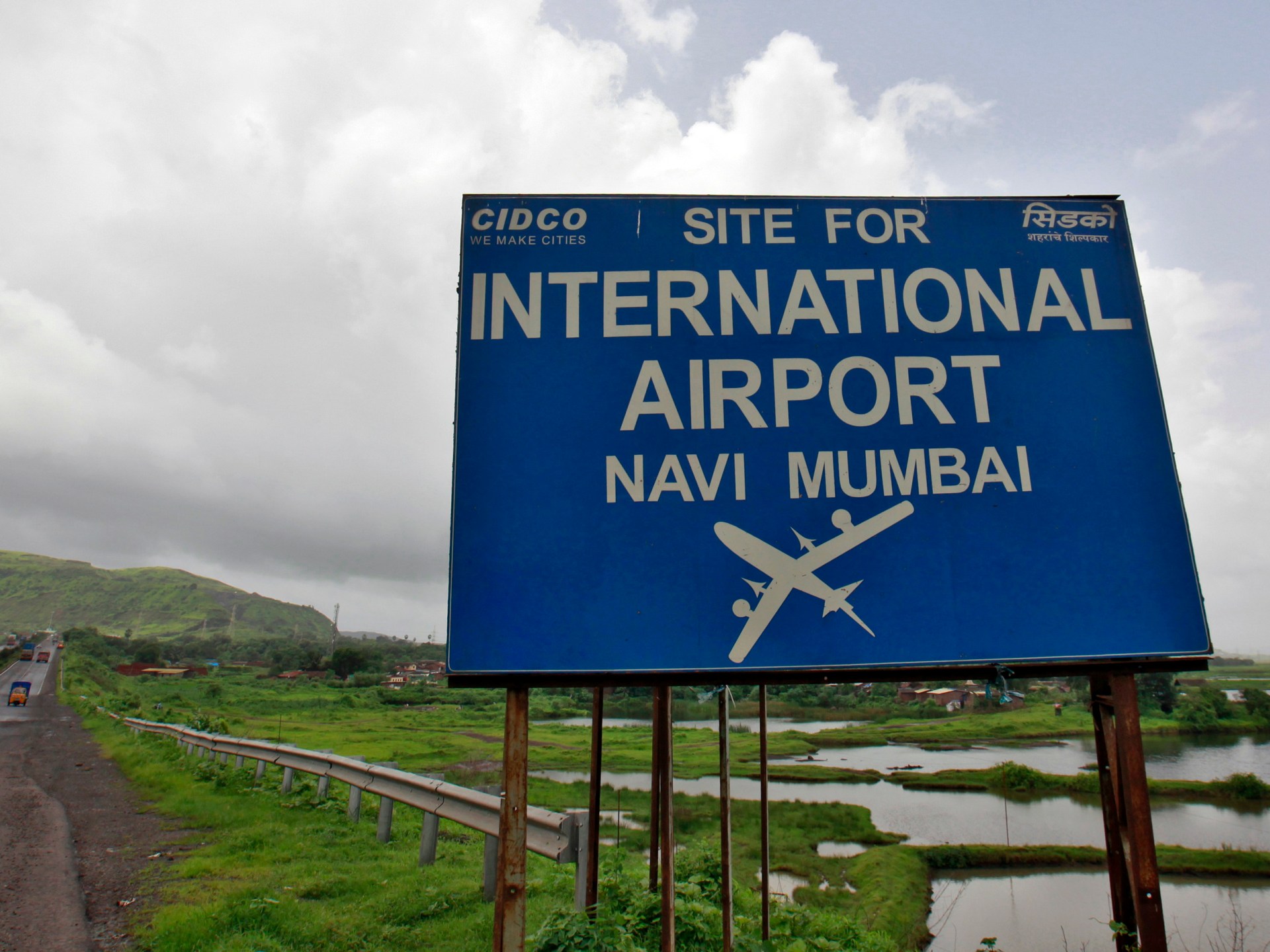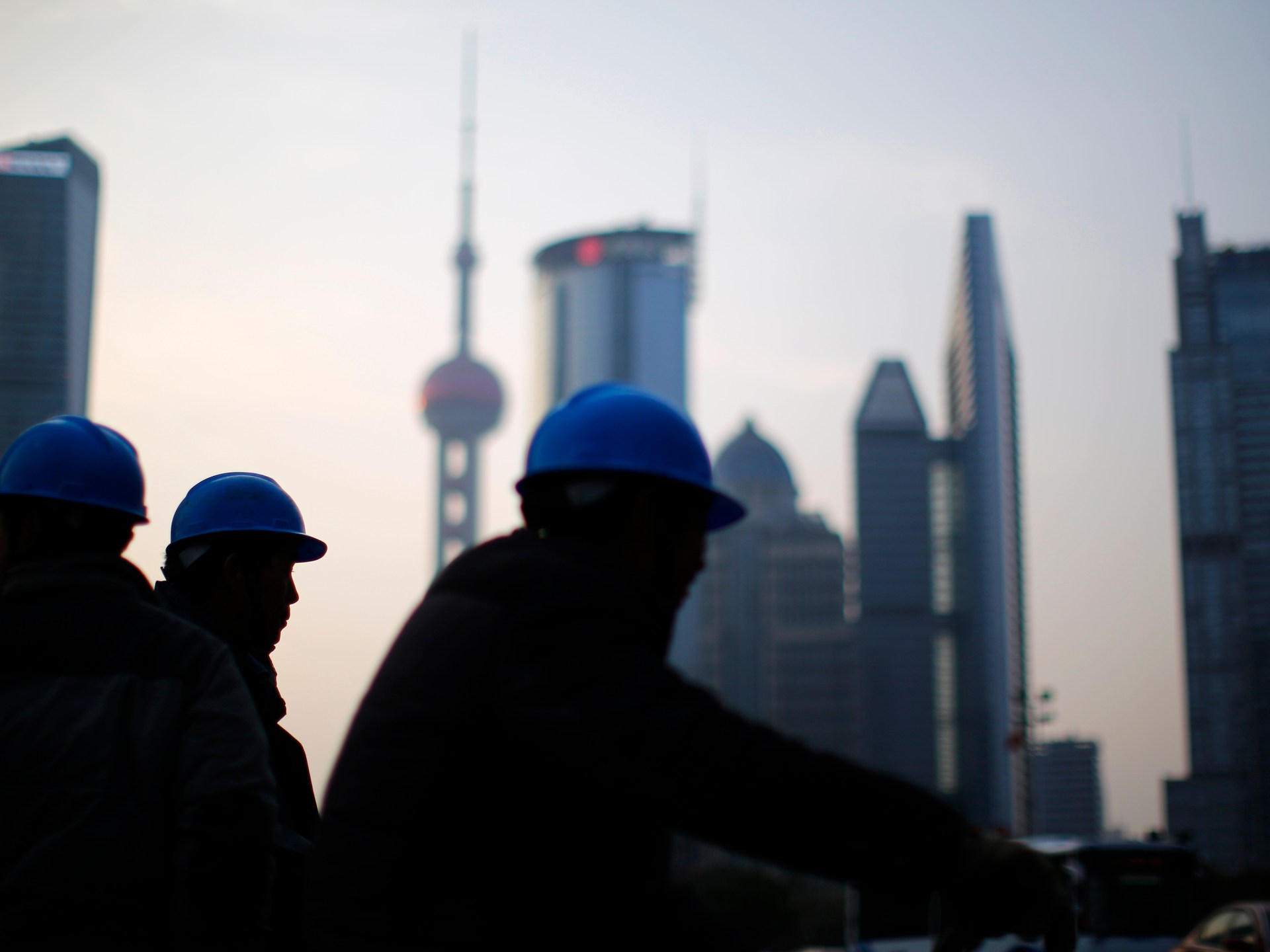India’s new airport unsafe due to bird strike risk, activists say
Mumbai, India – When the first runway at Navi Mumbai International Airport becomes operational in late 2024, Mumbai’s second airport will be able to handle 20 million passengers a year.
Once completed in 2032, the airport will ultimately be able to cater to 90 million annual passengers.
The airport’s developer and the city’s government say the project is an essential piece of infrastructure to ease pressure on the existing Chhatrapati Shivaji Maharaj International Airport, which currently caters to nearly 50 million passengers per annum.
But some aviation experts and activists are concerned that the airport’s location poses a risk to air safety. They say the site’s proximity to two major bird sanctuaries and the feeding spots of several species of migratory birds leaves aircraft vulnerable to bird strikes.
So far, their pleas appear to have fallen on deaf ears.
Navi Mumbai International Airport is being built in Navi Mumbai, a planned development that forms part of the wider Mumbai Metropolitan Region, chosen for its proximity to the country’s financial capital and international port facilities. The airport site is close to the business district of Belapur, manufacturing hubs such as Taloja, Patalganga, Ambernath and Roha, and the city of Panvel.
The site is also located little more than 10km (6 miles) from Karnala Bird Sanctuary, home to more than 200 species of birds, and close to mangroves, mudflats and wetlands that attract migratory birds such as flamingoes, starlings, buntings and rose-finches. Many of these natural sites are being reclaimed for the construction of the airport.

SM Satheesan, an expert in bird strike prevention, believes the new airport’s location makes it “highly dangerous,” especially when considering a bird strike case he investigated in New Delhi some years ago that took place far from any habitat.
“I examined the bird remains and they belonged to flamingoes, despite there being no major flamingo habitats in the area,” Satheesan told Al Jazeera. “Now at the Navi Mumbai site, where there is a flamingo sanctuary nearby, the flamingoes are going to create havoc!”
Satheesan said that destroying birds’ natural habitats like mudflats and wetlands also makes it more likely they will venture onto the airport land.
“The runway offers a place for resting and feeding for birds driven out of their other usual habitats. It becomes a dining table … of sorts where birds can find crushed remains of smaller animals, insects and termites,” he said.
BN Kumar, head of the environmental advocacy group NatConnect, expressed similar concerns.
“Migratory birds have high site fidelity,” Kumar told Al Jazeera. “The wetlands therefore need to be preserved to ensure that the birds do not venture into the airport area.”
The City and Industrial Development Corporation (CIDCO), the coordinating body for the project, appointed the Bombay Natural History Society (BNHS) to conduct a detailed study of the issue more than a decade ago.
Since then, BNHS has been publishing periodic reports about bird habitats and movements, which have been quoted in the Environmental Impact Assessment report prepared by the Adani group, which is constructing the airport.
The reports identified five key wetlands in the area: NRI, TS Chanakya, Belpada, Bhendkhal and Panje, and emphasised the importance of preserving them to prevent birds from finding their way either into the flight path of aircraft or the runway.
“We are observing high tide roosting of birds, during the October to May period at the wetlands near NRI and TSC on Palm Beach Road and the wetlands in the Uran area,” the BNHS said in its 2014 report.
“These birds were seen moving in flocks from roosting sites to the creeks and open mudflats on the seashore for foraging during low tide and returning during high tide.”
Environmentalist Debi Goenka, the founder of Conservation Action Trust (CAT), said he has written to multiple authorities about the issue only to receive no reply.
“We had written to the Ministry of Civil Aviation, and the DGCA [Directorate General of Civil Aviation], and unfortunately, we haven’t even got an acknowledgement, let alone a reply,” Goenka told Al Jazeera.
In his letter dated July 24, 2018, Goenka pointed out that the BNHS report “revealed that the site is located in the midst of an extremely bird rich habitat. This location is therefore extremely unsafe for both air passengers and birds.”

CIDCO did not respond to repeated requests for comment.
A spokesperson for Navi Mumbai International Airport Ltd (NMIAL), the authority responsible for building, maintaining, and operating the airport, said new roosting sites were being developed away from the airport to keep birds away from the site.
“Birds are attracted to roosting sites. Bombay Natural History Society has proposed roosting sites in the earlier reports across Thane Creek and South of Jawaharlal Nehru Port Trust, which was away from the airport,” the spokesperson told Al Jazeera.
“The sites are being developed as roosting sites to attract and home the birds away from the airport.”
The spokesperson dismissed concerns that the site could be prone to bird strikes.
“It is important to note that the Karnala Bird Sanctuary is not in the approach flight path to the airport,” the spokesperson said. “Additionally, the mudflats at Sewri across Thane Creek are more than 15 to 16km [9-10 miles] away from the airport.”
However, Deepak Apte, a scientist who has studied bird strikes in detail, said activists are right to be concerned.
“Bird-related accidents are usually rare, but in case of this site, these birds are getting squeezed into smaller and smaller areas, forcing them to form large flocks,” Apte told Al Jazeera.
“Flock management is a challenge. We require sophisticated equipment to monitor flock movement, especially given how it is related to tidal changes.”
“Migratory birds follow the same patterns and rest and feed at the same sites every year,” Apte added, explaining any changes to the sites are likely to affect the movement of bird flocks.

Supporters of the project point to the need to expand Mumbai’s air travel capacity.
Chhatrapati Shivaji Maharaj International Airport — opened in the 1940s — handled 4.5 million passengers and more than 27,000 flights in January alone, averaging more than 140,000 passengers and 882 flights every day.
“The passenger count recorded for the calendar year 2019 (at CSMIA) was 49.8 million,” the NMIAL spokesperson said.
Following a brief lull due to the COVID-19 pandemic, passenger traffic has picked up again and is projected to hit 49 million by the end of the calendar year 2023.
“We will be running at peak capacity in the next five years, which will be around 55 million passengers,” the spokesperson said.
“The Navi Mumbai International Airport is being developed to serve an ultimate airport capacity of 90 million annual passengers, which includes domestic and international passengers. It will also have 2.5 million Metric Tonnes per annum of cargo handling capacity.”
Environmental activists like Goenka, the founder of CAT, argue a better site could have been chosen for the city’s second airport, including a 728-hectare (1,800-acre) site near the city of Kalyan that was originally developed as an airstrip by the British during World War II.
“There was a better site at Nevali near Kalyan,” Goenka said. “It was halfway between Mumbai and Pune and would have served both cities.”
“This land was already owned by the Defense Ministry. Moreover, this land already had an airstrip and would have been easier to develop compared to the Navi Mumbai land where mangroves are being reclaimed, wetlands and mudflats are endangered, hills have to be levelled and rivers diverted for constructing the airport.”




